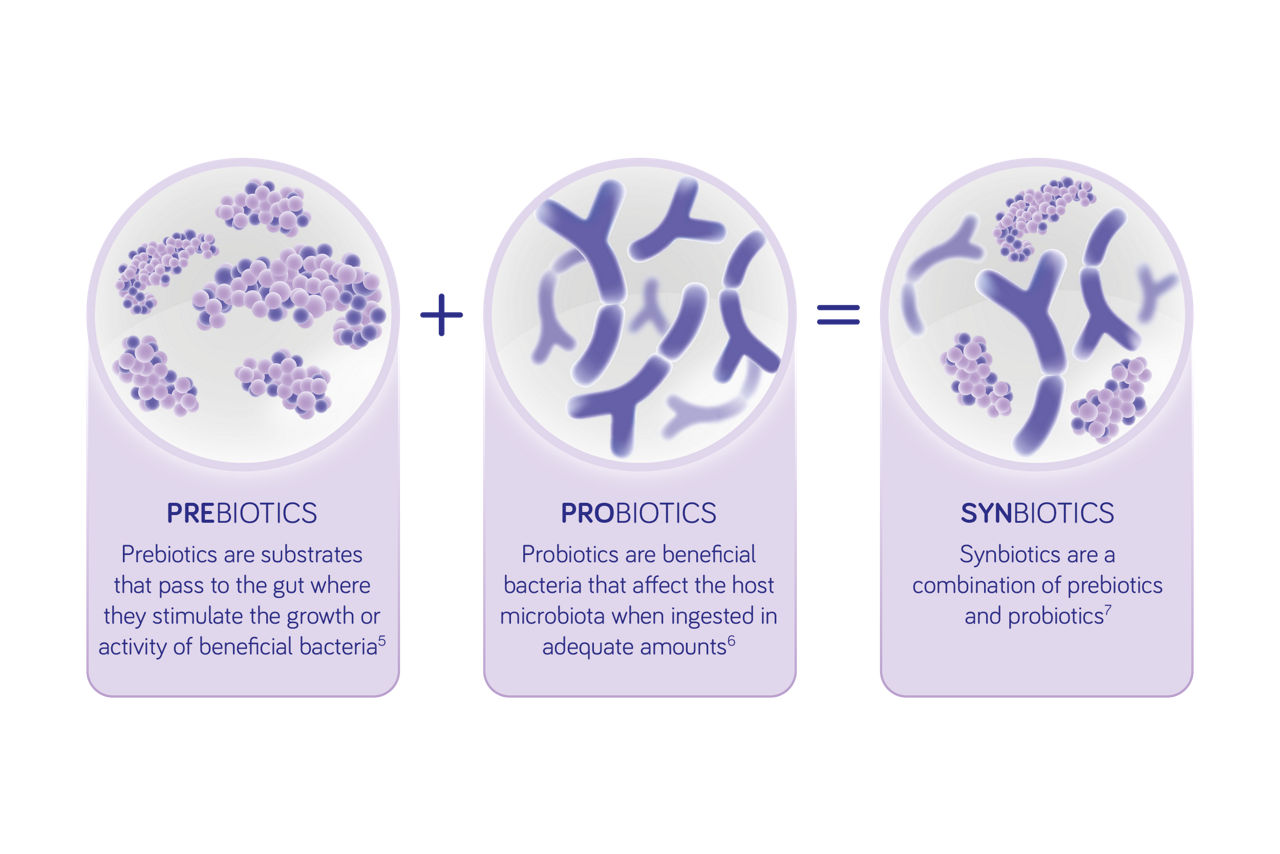The important role of the gut microbiome in infants’ immune system development and future health is becoming ever clearer. In this article for healthcare professionals, we take a closer look at the gut microbiome, its link to overall health, and how it can be supported with specific nutritional components.
The surface of our planet is covered in microbes, and we are no different. Microbes are found on any external surface of our body, including the skin and gut1 and these bacterial cells are thought to number 10 to 100 times higher than our own human cells2. The combination of all the genetic information of the microbes on your body is your ‘microbiome3. Our gut alone, in particular the large intestine, contains 1,000 known species of bacteria and is the area with the highest levels of bacteria on our body1,4.
Through research it is becoming increasingly apparent that the gut microbiome links to overall health, particularly in the areas of digestion and absorption of nutrients, gut-brain interactions and immunity5,6. Bacteria digest fibres, in the large intestine, and this leads to production of important metabolites e.g. short chain fatty acids (SCFA)7. SCFAs are estimated to contribute 10% of energy requirements8, highlighting the microbiome’s important role in extracting nutrients from our diet.
70-80% of the body’s immune cells are in the gut and the bacteria in the gut communicate with these cells9. The signals from the gut microbiota are critical for the developing immune system9. In relation to immunity, studies have found links between gut microbiome and allergy incidence, e.g. caesarean infants, who had a different microbiome composition to vaginal delivered infants, were found to have increased cytokine IL-13 production suggesting higher asthma incidence10.
Specific nutritional components can support a healthy gut microbiome. These include probiotics, prebiotics, synbiotics and postbiotics.
What are Prebiotics, Probiotics, Postbiotics and Synbiotics?
Prebiotics are substrates that pass to the gut where they stimulate the growth or activity of beneficial bacteria11.
Human milk oligosaccharides (HMOs) are the third most abundant component of human milk12. They are a group of structurally diverse oligosaccharides with prebiotic effects, amongst other benefits.
Galacto-oligosaccharides & Fructo-oligosaccharides (GOS & FOS) also known as prebiotic fibres. Prebiotic fibres promote the growth of beneficial bacteria in the large intestine.
Probiotics are beneficial bacteria that affect the host gut microbiome when ingested in adequate amounts13.
Postbiotics are bioactive compounds produced by beneficial bacteria, which have biological activity in the host13.
Synbiotics are a combination of prebiotics and probiotics13.
The gut microbiome develops rapidly in early years, reaching adult-like composition by around 3 years of age14. The early years of life are a crucial period to support development of a healthy microbiome and can be influenced by environmental factors including: mode of delivery (e.g. vaginal or c-section), gestational age at birth and diet14. Early life nutrition is an important factor, influencing the development of the gut, microbiome and immune system2.
Breastmilk is the best nutrition for newborns and has been shown to support optimal growth and development of infants. Exclusive breastfeeding is widely recommended as the first choice for infant nutrition16. Breastmilk has a highly diverse range of components, including human milk oligosaccharides (HMOs), live bacteria and their metabolites17,18. These are acknowledged to play a crucial role in the development of the gut microbiome and immune system19.
In summary
The importance of the gut microbiome towards an infant’s overall health has become more apparent over recent years and is likely to continue in this direction in the future. It is clear that early life is a critical period for the development of the infant gut microbiome and that nutrition is a major factor in which to help this development.
To download and print this guide on the gut microbiome, click here.
Learn more about the Gut Microbiome in your area of interest
Do you have a question?
Contact our team of experts for guidance on the use and composition of our product range, for support with queries regarding your Nutricia account and sampling service or to get in touch with your local Nutricia representative. We are available Monday to Thursday 9am-5pm and Friday 9am-4pm (except Bank Holidays)

Help us provide information most relevant to you
Please ensure your role and areas of interest are up to date.





